Filter by
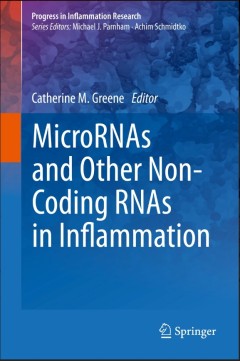
MicroRNAs and Other Non-Coding RNAs in Inflammation
The book serves as a comprehensive resource for scientists and clinicians studying the role of non-coding RNAs in inflammation (viral infections, wound inflammation), human inflammatory diseases (i.e. rheumatoid arthritis, Crohn’s disease, diabetes) and innate immunity. It provides a universal reference work comprising both basic and specialized information. Given that ncRNAs represent new th…
- Edition
- 1
- ISBN/ISSN
- 978-3-319-13689-9
- Collation
- X
- Series Title
- Progress in Inflammation Research
- Call Number
- -
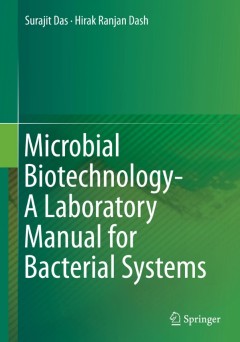
Microbial Biotechnology- A Laboratory Manual for Bacterial Systems
Microorganisms play an important role in the maintenance of the ecosystem structure and function. Bacteria constitute the major part of the microorganisms and possess tremendous potential in many important applications from environmental clean up to the drug discovery. Much advancement has been taken place in the field of research on bacterial systems. This book summarizes the experimental setu…
- Edition
- 1
- ISBN/ISSN
- 978-81-322-2094-7
- Collation
- XVI, 239
- Series Title
- -
- Call Number
- -

MicroRNAs and Other Non-Coding RNAs in Inflammation
The book serves as a comprehensive resource for scientists and clinicians studying the role of non-coding RNAs in inflammation (viral infections, wound inflammation), human inflammatory diseases (i.e. rheumatoid arthritis, Crohn’s disease, diabetes) and innate immunity. It provides a universal reference work comprising both basic and specialized information. Given that ncRNAs represent new th…
- Edition
- 1
- ISBN/ISSN
- 978-3-319-13688-2
- Collation
- X, 237
- Series Title
- Progress in Inflammation Research
- Call Number
- -

Ethnobotany of Mexico Interactions of People and Plants in Mesoamerica
This book reviews the history, current state of knowledge, and different research approaches and techniques of studies on interactions between humans and plants in an important area of agriculture and ongoing plant domestication: Mesoamerica. Leading scholars and key research groups in Mexico discuss essential topics as well as contributions from international research groups that have conduct…
- Edition
- -
- ISBN/ISSN
- 978-1-4614-6669-7
- Collation
- 21 b/w illustrations, 71 illustrations in colour
- Series Title
- -
- Call Number
- -

Essentials of Stochastic Processes
Building upon the previous editions, this textbook is a first course in stochastic processes taken by undergraduate and graduate students (MS and PhD students from math, statistics, economics, computer science, engineering, and finance departments) who have had a course in probability theory. It covers Markov chains in discrete and continuous time, Poisson processes, renewal processes, martinga…
- Edition
- -
- ISBN/ISSN
- 978-3-319-45614-0
- Collation
- 26 b/w illustrations
- Series Title
- -
- Call Number
- -
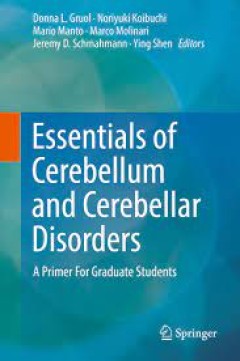
Essentials of Cerebellum and Cerebellar Disorders A Primer For Graduate Stud…
Essentials of the Cerebellum and Cerebellar Disorders is the first book of its kind written specifically for graduate students and clinicians. It is based on the 4-volume treatise, Handbook of the Cerebellum and Cerebellar Disorders (Springer, 2013), the definitive reference for scientists and neurologists in the field of cerebellar neurobiology. There have been fundamental advances in the basi…
- Edition
- -
- ISBN/ISSN
- 978-3-319-24551-5
- Collation
- 51 b/w illustrations, 61 illustrations in colour
- Series Title
- -
- Call Number
- -

Transcriptomics and Gene Regulation
This volume focuses on modern computational and statistical tools for translational gene expression and regulation research to improve prognosis, diagnostics, prediction of severity, and therapies for human diseases. It introduces some of state of the art technologies as well as computational and statistical tools for translational bioinformatics in the areas of gene transcription and regulatio…
- Edition
- 1
- ISBN/ISSN
- 978-94-017-7450-5
- Collation
- X, 185
- Series Title
- Translational Bioinformatics
- Call Number
- -

Recent Advances in Lichenology: Modern Methods and Approaches in Biomonitorin…
This book discusses in detail molecular, mycobiont culture, biomonitoring and bioprospection of lichens, providing insights into advances in different fields of lichenology by applying modern techniques and approaches and examining how their application has enhanced or changed classical approaches. It offers a valuable resource, especially for beginners, students and researchers from different …
- Edition
- -
- ISBN/ISSN
- 978-81-322-2181-4
- Collation
- -
- Series Title
- -
- Call Number
- 581.3
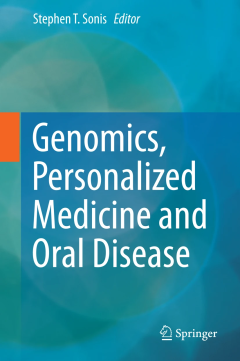
Genomics, Personalized Medicine and Oral Disease
The objective of this book is to catalyze the application of genomics to the diagnosis and treatment of oral diseases by comprehensively presenting focused discussions on the current state of knowledge. The first section book provides basic information about genetics, genomics and personalized medicine and the informatical methods available to apply and organize genetic data so that it has clin…
- Edition
- -
- ISBN/ISSN
- 978-3-319-17941-4
- Collation
- XIV, 408
- Series Title
- -
- Call Number
- 573.2 GEN
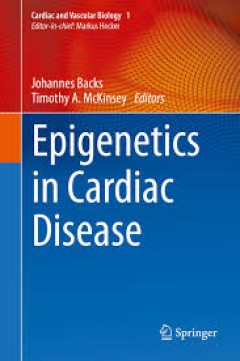
Epigenetics in Cardiac Disease
This book describes important advances in our understanding of how environmental conditions affect cardiac gene expression through epigenetic mechanisms. Further, it discusses the roles of chromatin modifications (in particular DNA methylation and histone modifications) and of chromatin regulators in the context of cardiac diseases. The book provides readers with an overview of our current unde…
- Edition
- -
- ISBN/ISSN
- 978-3-319-41457-7
- Collation
- 10 b/w illustrations, 24 illustrations in colour
- Series Title
- -
- Call Number
- -
 Computer Science, Information & General Works
Computer Science, Information & General Works  Philosophy & Psychology
Philosophy & Psychology  Religion
Religion  Social Sciences
Social Sciences  Language
Language  Pure Science
Pure Science  Applied Sciences
Applied Sciences  Art & Recreation
Art & Recreation  Literature
Literature  History & Geography
History & Geography